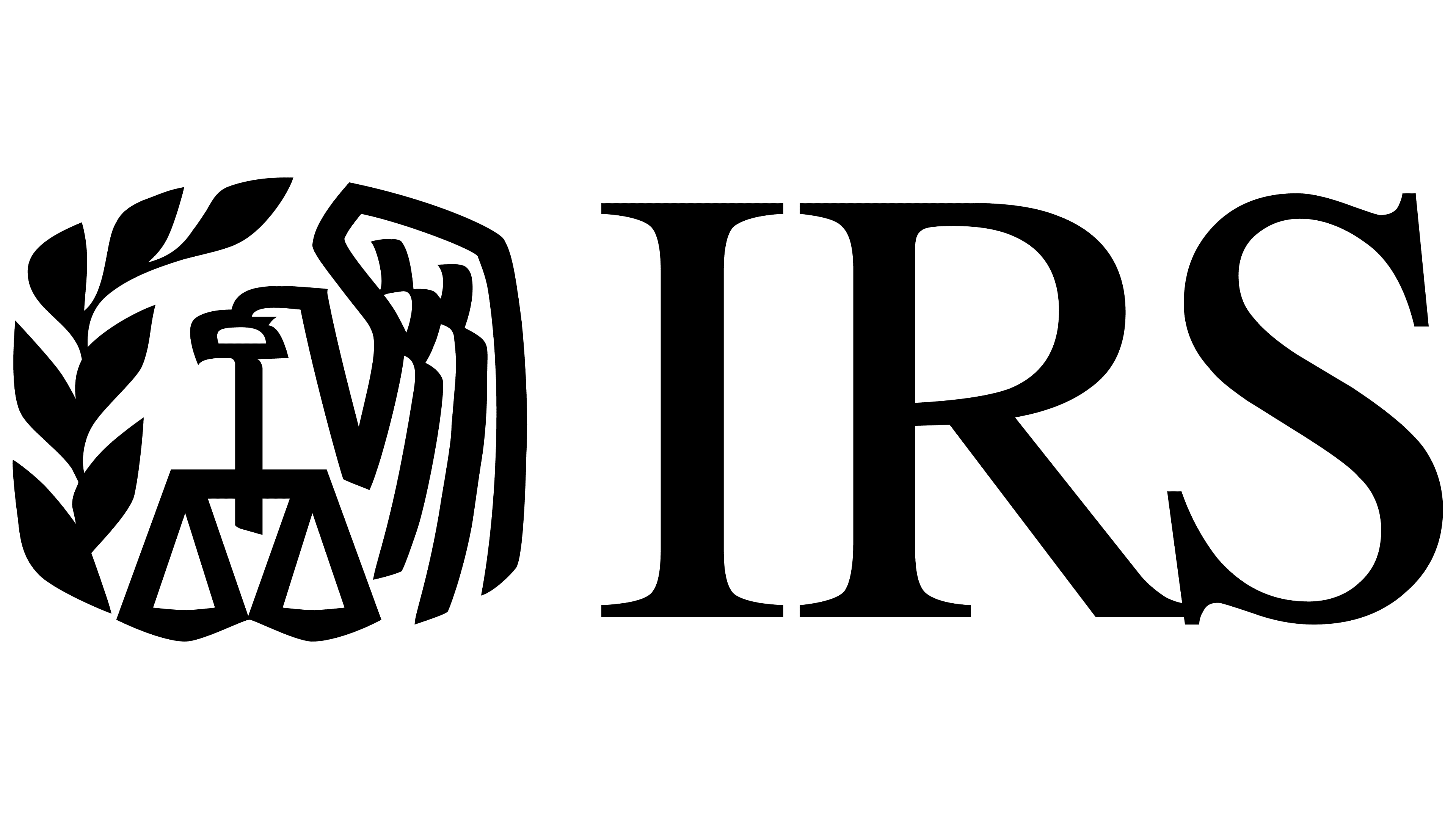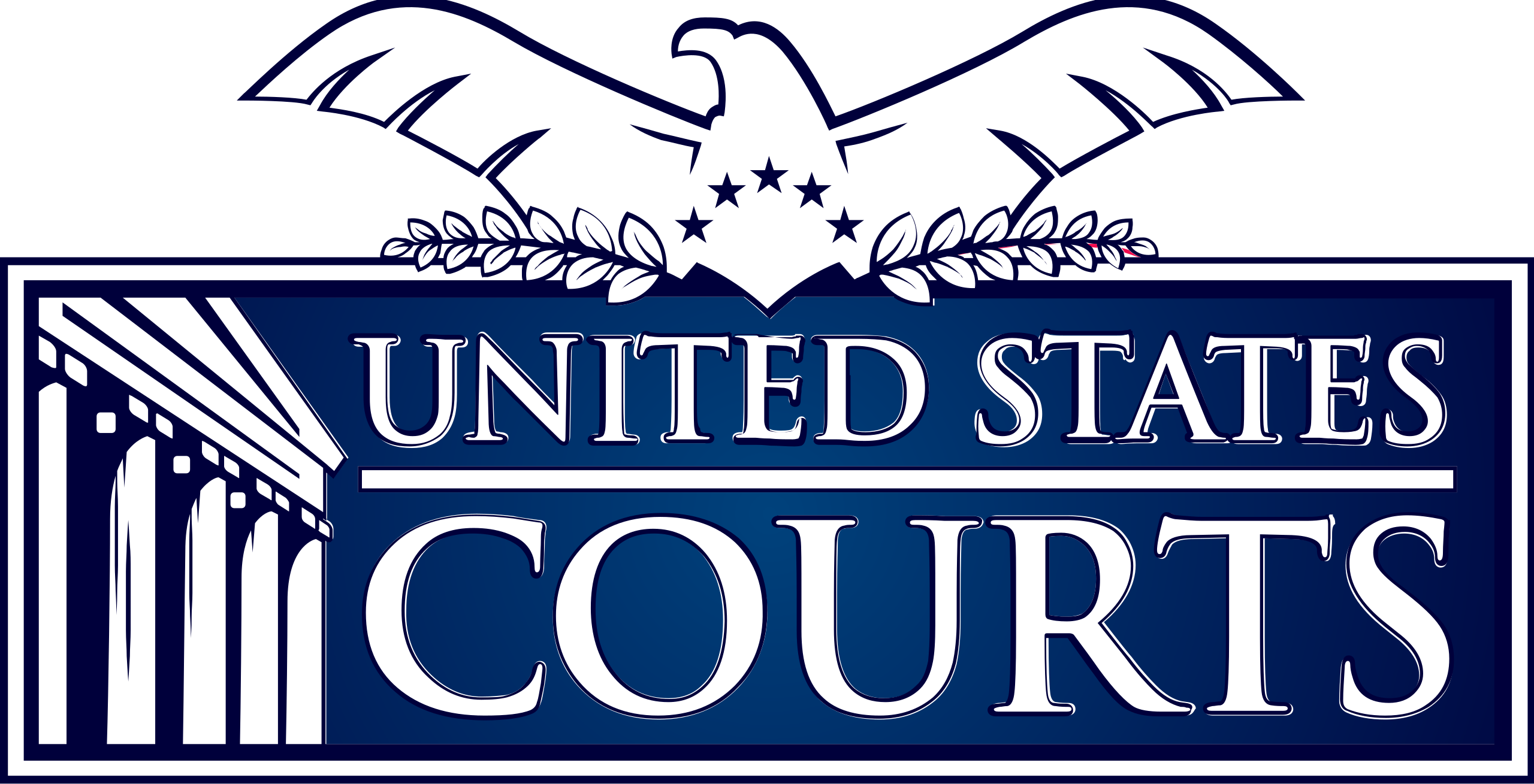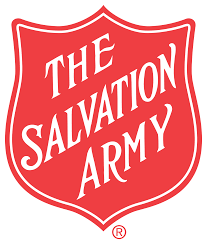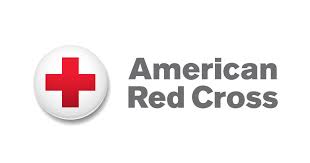IRS Form 8283 serves as a critical document for taxpayers who make substantial non-cash charitable donations. This specialized tax form enables individuals and organizations to accurately report property contributions to charitable organizations, ensuring proper documentation of charitable giving and potential tax deductions. The form becomes particularly important when donations exceed $500, requiring detailed information about the donated property, its fair market value, and the receiving charitable organization. By providing a structured method for reporting charitable contributions, Form 8283 helps taxpayers maintain transparency with the Internal Revenue Service while supporting their ability to claim appropriate tax deductions for philanthropic efforts.
Navigating the complexities of charitable donations requires a clear understanding of IRS documentation and valuation requirements. When donating non-cash items valued over $500, taxpayers must provide a comprehensive and accurate assessment of the property's value through IRS Form 8283. A professional appraisal becomes critical in this process, serving multiple essential functions beyond simple documentation.
An independent appraisal provides an objective, credible valuation that meets strict IRS guidelines. This detailed assessment examines the item's condition, market comparables, and intrinsic characteristics to determine its fair market value. By obtaining a professional evaluation, donors create a robust defense against potential audit scrutiny and ensure they're accurately representing their charitable contributions.
The appraisal serves multiple critical purposes. It helps taxpayers comply with IRS regulations, prevents potential penalties from misreporting, and provides transparency for both donors and receiving charitable organizations. Different types of property—whether artwork, vehicles, real estate, or other significant assets—often require specialized valuation approaches that a qualified appraiser can expertly navigate.
Beyond regulatory compliance, a well-documented appraisal supports the broader mission of charitable giving. It allows non-profit organizations to accurately record and understand the true value of in-kind donations, enhancing their financial reporting and demonstrating the tangible impact of charitable contributions.
Most importantly, a professional appraisal protects the donor's interests. It provides a credible, independent assessment that can withstand potential IRS review, giving taxpayers confidence in their charitable deduction claims. By investing in a thorough, professional valuation, donors can ensure their generosity is both recognized and properly documented.
An antique silver appraisal represents a specialized professional assessment that meticulously evaluates silver objects crafted over a century ago. This comprehensive evaluation goes far beyond a simple price estimation, encompassing a nuanced exploration of historical significance, craftsmanship, and current market dynamics.
The process involves a detailed forensic examination of the silver piece, where expert appraisers leverage deep knowledge to uncover intricate details about the item's provenance. Specialized techniques are employed to authenticate the piece's origin, including careful analysis of hallmarks, maker's stamps, and distinctive design elements that provide critical insights into its historical context.
Condition plays a pivotal role in determining value. Professional appraisers conduct meticulous inspections, examining every surface for signs of wear, potential restoration attempts, and structural integrity. They assess subtle nuances like patina development, manufacturing techniques, and preservation quality that can dramatically influence the item's market worth.
Market research forms another crucial component of the appraisal process. Appraisers conduct extensive comparative analyses, tracking recent auction results, collector trends, and current market demands to establish a precise and current valuation. This approach ensures that the assessment reflects not just the silver's intrinsic material value, but its broader collectible significance.
The ultimate goal of an antique silver appraisal extends beyond a simple monetary figure. It provides owners with comprehensive documentation that serves multiple purposes, from insurance documentation to estate planning, offering a definitive understanding of the item's historical and financial importance.
Online antique silver appraisals have become increasingly sophisticated, offering clients a convenient and professional alternative to traditional in-person evaluations. Skilled appraisers can now accurately assess silver antiques through detailed photographic documentation and comprehensive item descriptions submitted electronically.
The virtual appraisal process typically involves clients providing high-resolution images from multiple angles, along with critical details about the item's provenance, markings, condition, and historical context. Advanced video conferencing platforms like Zoom or Skype enable real-time interactions, allowing appraisers to conduct interactive examinations and answer client questions immediately.
Professional online appraisals adhere to the Uniform Standards of Professional Appraisal Practice (USPAP), ensuring rigorous methodology and credible valuation regardless of assessment format. This approach eliminates geographical constraints, providing flexibility for clients located anywhere and streamlining the entire valuation experience.
While online appraisals offer remarkable convenience, they are most effective when clients provide extensive, clear documentation. Precise photographs, accurate measurements, and comprehensive background information are crucial for delivering an accurate assessment of an antique silver item's condition, authenticity, and market value.
Clients should understand that some complex or rare pieces might still require in-person examination to determine a definitive valuation. However, for many antique silver items, online appraisals represent an efficient, professional, and accessible method of understanding an item's worth.
Antique silver appraisers represent a nuanced professional landscape with distinct specialties and expertise. These professionals can be categorized based on their professional focus, depth of knowledge, and service delivery methods. Understanding these variations helps collectors and owners select the most appropriate expert for their specific silver valuation needs.
General appraisers offer broad knowledge across multiple antique categories, capable of evaluating various silver items with a comprehensive but less specialized approach. Their versatility allows them to assess diverse silver pieces, though they may lack granular insights into rare or complex items.
Specialty appraisers represent a more focused category, concentrating on specific historical periods, cultural origins, or design styles. These experts possess deep, targeted knowledge about particular silver manufacturing eras, makers, or regional craftsmanship. Their expertise enables precise authenticity assessments and nuanced market value determinations.
Certified appraisers bring professional credentials from recognized institutions, demonstrating rigorous training and adherence to established ethical standards. Their qualifications make them particularly valuable for formal documentation requirements like insurance evaluations or estate planning.
Auction house appraisers leverage extensive market experience, providing real-time insights into current silver valuation trends. Their proximity to active market dynamics allows them to offer sophisticated pricing assessments based on contemporary collector interests and market demands.
Independent appraisers operate autonomously, offering customized services with flexible engagement models. Their professional independence allows for personalized approaches tailored to unique client requirements and specialized silver item assessments.
Online appraisers represent an emerging category, utilizing digital platforms to conduct remote evaluations. Through advanced photographic documentation and detailed item descriptions, these professionals provide convenient assessment options for clients unable to engage in traditional in-person consultations.
Each appraiser type contributes unique perspectives to silver valuation, enabling owners to find precisely matched expertise for their specific needs.
Antique silver items are more than mere decorative pieces; they are repositories of history, craftsmanship, and potential financial value. An expert appraisal offers comprehensive insights that extend far beyond a simple price tag.
Insurance protection represents a critical motivation for professional assessment. A detailed appraisal ensures accurate coverage, preventing potential financial gaps in the event of loss, damage, or theft. Insurance providers rely on professional documentation to establish appropriate compensation levels.
Estate planning demands precise valuation of inherited silver pieces. A professional appraisal provides clear, objective documentation that can streamline inheritance processes, minimize potential family disputes, and establish a transparent framework for asset distribution.
Tax considerations make appraisals particularly valuable for those considering charitable donations. When donating antique silver items exceeding $5,000, a qualified professional appraisal becomes essential for substantiating value and maximizing potential tax deductions.
For collectors and sellers, an appraisal delivers a realistic market assessment. This knowledge empowers informed decision-making, whether preparing to sell at auction, negotiate with potential buyers, or understand the current market positioning of a specific piece.
Beyond monetary considerations, an appraisal unveils the historical narrative embedded within each silver item. Professional assessment reveals intricate details about craftsmanship, origin, and cultural significance, transforming an object from a mere possession to a meaningful artifact with its own unique story.
Understanding the multifaceted value of antique silver through professional appraisal enables owners to make informed, strategic decisions about preservation, insurance, potential sale, and long-term asset management.
What Makes Antique Silver Valuable?
Understanding the Value of Antique Silver
Antique silver has long captivated collectors and investors, representing more than just monetary worth, but also historical significance and artistic craftsmanship. Several key factors contribute to determining its true value.
Key Valuation Factors
- Rarity: Limited production pieces and items created by renowned silversmiths inherently command higher values
- Historical Context: Pieces with documented provenance or significant historical importance become more desirable
- Condition: Well-preserved items with minimal restoration demonstrate superior long-term value
- Craftsmanship: Intricate designs and exceptional artistic techniques elevate an item's worth
Critical Evaluation Components
- Authenticity Verification
- Documentation of ownership history
- Expert authentication
- Original maker's marks
- Stylistic Period Assessment
- Georgian era pieces
- Victorian design elements
- Art Deco influences
Market Dynamics
Economic conditions and collector trends significantly influence antique silver valuations. Collectors must remain attentive to:
- Current market demand
- Economic investment cycles
- Collector preferences in specific periods or styles
Understanding these multifaceted valuation elements requires nuanced expertise and comprehensive market knowledge.
Why Do You Need a Professional Appraisal for IRS Form 8283?
When reporting non-cash charitable contributions on IRS Form 8283, obtaining a professional appraisal for antique silver is essential for several critical reasons:
Compliance and Tax Reporting Accuracy
- The IRS requires precise valuation of donated items to ensure transparency
- Professional appraisals establish fair market value based on:
- Current market conditions
- Demand for specific silver pieces
- Unique item characteristics
- Reduces risk of potential tax audits
Expert Specialized Knowledge
- Professional appraisers offer specialized expertise in:
- Identifying silver types
- Assessing historical significance
- Evaluating craftsmanship
- Access to comprehensive market data and current trends
- Provide more precise and credible valuation than personal estimates
Legal and Financial Protection
- Well-documented appraisals serve as legitimate proof of value
- Protects against:
- IRS penalties
- Disallowed tax deductions
- Enhances donation credibility for charitable organizations
Peace of Mind and Due Diligence
- Eliminates reliance on personal or outdated valuations
- Demonstrates careful assessment of donation value
- Honors the intrinsic worth and historical significance of antique silver
Navigating the Complexities of Antique Silver Valuation
Antique silver appraisal is a sophisticated process that requires deep expertise, especially when preparing IRS Form 8283. Understanding the nuanced factors that influence valuation helps individuals accurately document their valuable items while ensuring proper tax compliance.
Key Valuation Determinants for Antique Silver
- Item Condition: A critical factor that directly impacts market value
- Examines signs of wear, repairs, and modifications
- Evaluates overall preservation and original state
- Historical Significance: Provenance and origin can dramatically enhance value
- Pieces crafted by renowned silversmiths
- Connection to notable historical events or individuals
- Limited production or unique design elements
- Rarity and Collectibility: Scarcity drives collector interest
- Limited edition pieces
- Items from specific historical periods
- Unique manufacturing techniques
Essential Considerations for Accurate Appraisal
- Comprehensive market trend analysis
- Objective and detailed documentation
- Adherence to IRS appraisal guidelines
- Understanding current collector demographics
Importance of Professional Expertise
A qualified appraiser specializing in antique silver provides more than just a monetary assessment. They offer:
- Precise valuation methodology
- Comprehensive documentation for tax purposes
- Insights into market dynamics
- Protection of the item's financial and historical value
Professional appraisal ensures that individuals can confidently navigate the complexities of antique silver valuation, maximizing potential tax benefits while preserving the integrity of their treasured items.
The Professional Appraisal: A Step-by-Step Guide
A professional appraisal for antique silver is a critical process, particularly when preparing documentation for IRS Form 8283, which is mandatory for non-cash charitable contributions valued over $500. This form requires comprehensive documentation of the property's fair market value, making an accurate, professional appraisal absolutely essential.
Step 1: Selecting a Qualified Appraiser
Identifying the right professional is paramount to a successful antique silver appraisal. Key considerations include:
- Seeking credentials from recognized professional organizations
- Verifying expertise in antique silver valuation
- Confirming specialization in historical and market assessment
Recommended professional organizations include:
- American Society of Appraisers
- International Society of Appraisers
- Appraisers Association of America
Step 2: Preparing Your Silver for Appraisal
Proper preparation can significantly enhance the appraisal process:
- Clean items thoroughly without damaging historical patina
- Gather all relevant historical documentation
- Collect previous appraisals, purchase receipts, and provenance records
- Organize items systematically for professional review
Step 3: Understanding the Appraisal Process
A comprehensive antique silver appraisal involves multiple detailed assessments:
- Detailed physical examination of each piece
- Evaluation of condition and preservation status
- Assessment of metal purity and weight
- Analysis of craftsmanship and historical significance
- Comparative market research
- Determination of current fair market value
Step 4: Reviewing the Appraisal Report
Your professional appraisal report should comprehensively outline:
- Precise item valuation
- Detailed methodology
- Supporting market data
- Professional appraiser's credentials
- Comprehensive item description
Step 5: Documentation Management
Proper document retention is crucial for multiple purposes:
- Tax documentation compliance
- Insurance verification
- Estate planning records
- Personal historical preservation
Maintaining organized, professional documentation ensures you are fully prepared for potential tax implications and provides a comprehensive record of your valuable antique silver collection.
Finding the Right Expert for Your Antique Silver Assessment
Finding the right expert for your antique silver assessment requires careful consideration of several critical factors. The following guidelines will help you select a qualified professional who can provide an accurate and compliant appraisal for IRS Form 8283.
Essential Qualifications to Consider
- Professional Certifications: Prioritize appraisers with memberships in recognized professional organizations such as:
- American Society of Appraisers (ASA)
- International Society of Appraisers (ISA)
- Look for credentials that demonstrate rigorous training and ongoing professional development
- Verify that the appraiser adheres to strict ethical and professional standards
Specialized Expertise in Antique Silver
Antique silver appraisal demands a nuanced and specialized approach. Key areas of expertise include:
- Deep understanding of historical manufacturing techniques
- Comprehensive knowledge of different makers and styles
- Ability to identify unique characteristics across various historical periods
- Proven experience in assessing similar antique silver pieces
Critical Evaluation Factors
Market Valuation Expertise
A qualified appraiser should demonstrate comprehensive market knowledge by considering:
- Current market trends in antique silver
- Piece's condition and preservation state
- Rarity and historical significance
- Provenance and documentation
IRS Form 8283 Compliance
When selecting an appraiser for tax purposes, prioritize professionals who:
- Have extensive experience with IRS appraisal requirements
- Understand the specific documentation needed for Form 8283
- Can provide a defensible and detailed valuation
- Maintain a track record of successful tax-related appraisals
Choosing the Right Professional
Beyond technical expertise, consider these interpersonal aspects:
- Clear and transparent communication
- Willingness to explain valuation methodology
- Professional demeanor
- Ability to address your specific concerns
By carefully evaluating these factors, you can select an appraiser who will provide a comprehensive, accurate, and compliant assessment of your antique silver for IRS Form 8283 purposes.
From Tea Sets to Candlesticks: Common Antique Silver Collectibles
Antique silver collectibles represent a diverse and fascinating world of historical artifacts, each piece telling a unique story through its craftsmanship and design. Understanding these collectibles is crucial for accurate valuation, especially when preparing documentation for tax purposes like IRS Form 8283.
Key Categories of Antique Silver Collectibles
Teaware
- Includes elaborate tea sets from prestigious historical periods
- Typical components:
- Intricately designed tea pots
- Delicate creamers
- Ornate sugar bowls
- Styles span Georgian, Victorian, and Edwardian eras
- Highly prized by serious collectors worldwide
Flatware
- Comprises sterling silver utensils including:
- Often family heirlooms passed through generations
- Certain patterns recognized as rare or limited edition
- Pieces from prestigious brands hold significant collector value
Serving Pieces
- Functional and decorative items such as:
- Ornamental trays
- Elegant bowls
- Detailed platters
- Feature elaborate engravings and artistic motifs
- Manufacturer hallmarks indicate quality and authenticity
Decorative Objects
- Includes standalone artistic pieces like:
- Candlesticks
- Figurines
- Decorative boxes
- Showcase diverse silversmithing techniques
- Serve as conversation pieces in collections
Appraisal Considerations
When seeking an antique silver appraisal, multiple factors contribute to accurate valuation:
- Physical condition of the item
- Historical provenance
- Historical context
- Current market demand
The collectibles market is dynamic, with values fluctuating based on trends, collector interest, and historical significance. Professional appraisals provide critical insights for collectors, investors, and estate planners, ensuring comprehensive understanding of these valuable artifacts.
Essential Documentation for Tax Deduction Purposes
Essential Documentation for IRS Form 8283 Charitable Contributions
Claiming tax deductions for charitable donations of antique silver requires meticulous documentation to meet IRS compliance standards. IRS Form 8283 serves as the critical vehicle for substantiating your charitable contribution.
Key Documentation Requirements
- Comprehensive Item Description
- Provide a detailed inventory of the antique silver item
- Include maker's information
- Specify date of manufacture
- Note precise weight
- Highlight any unique distinguishing characteristics
- Professional Appraisal Specifications
- Obtain an independent valuation from a qualified appraiser
- Ensure appraisal is completed within 60 days of donation date
- Validate that the report meets comprehensive IRS guidelines
- Include clear rationale for determined market value
- Appraiser Credibility
- Select an appraiser with recognized professional credentials
- Verify membership in professional appraisal organizations
- Confirm expertise in antique silver valuation
- Precise Donation Documentation
- Record exact date of charitable donation
- Verify value reflects market conditions at time of transfer
- Understand that silver valuations can fluctuate
- Required Signatures and Verification
- Obtain signatures from donor and receiving organization
- Complete official acknowledgment forms
- Maintain clear transfer documentation
Comprehensive documentation protects your tax position, provides transparency, and creates a robust defense against potential IRS inquiries. Meticulous preparation can significantly streamline the tax reporting process and validate the legitimacy of your charitable contribution.
Important Considerations
While gathering documentation might seem complex, a systematic approach ensures compliance and maximizes your potential tax benefits. Each component plays a crucial role in creating a comprehensive and defensible record of your antique silver donation.
What Determines the True Value of Your Antique Silver?
Key Factors Determining Antique Silver Value
Assessing the true value of antique silver involves carefully evaluating multiple critical elements. Understanding these factors is essential for accurate valuation, particularly when preparing documentation for IRS Form 8283.
1. Age and Historical Significance
- Historical provenance dramatically impacts overall value
- Pieces with well-documented ownership history are more desirable
- Original makers and historical context increase collectible appeal
2. Condition Assessment
- Minimal wear and original finish are crucial indicators of value
- Appraisers carefully evaluate:
- Structural integrity
- Surface scratches
- Previous restoration work
- Pristine condition can significantly enhance market worth
3. Maker and Authenticity Markers
- Renowned silversmiths dramatically influence piece value
- Identifying hallmarks provide critical authentication details
- Specific markers help trace:
- Origin of production
- Manufacturing date
- Silversmith credentials
4. Craftsmanship and Artistic Merit
- Intricate design elements increase collectible value
- Advanced metalworking techniques enhance desirability
- Notable artistic characteristics include:
- Elaborate engravings
- Complex repousse work
- Unique decorative techniques
5. Market Dynamics
- Collector trends continuously evolve
- Economic conditions impact antique silver valuations
- Staying informed about current market preferences is essential
By comprehensively understanding these interconnected factors, collectors and owners can gain meaningful insights into their antique silver's true market value.
Debunking Myths in Antique Silver Valuation
When it comes to antique silver valuation, numerous misconceptions can lead collectors and donors astray, particularly when preparing documentation for IRS Form 8283. Understanding these myths is crucial for making informed decisions about valuable items.
Common Myths in Antique Silver Valuation
Myth 1: All Antique Silver is Valuable
Not every piece of antique silver represents a treasure trove of wealth. The actual value depends on multiple critical factors:
- Craftsmanship quality
- Historical significance
- Overall condition
- Current market demand
While some rare or exceptional pieces can command impressive prices, many antique silver items may only be worth their base metal value.
Myth 2: Silver Plate Equals Sterling Silver
A critical misunderstanding exists between silver-plated items and sterling silver:
- Silver plate: Thin silver layer over base metal
- Sterling silver: 92.5% pure silver composition
The valuation difference is substantial, with sterling silver typically holding significantly more financial value than silver-plated items.
Myth 3: Family Heirlooms Are Automatically Valuable Collectibles
Sentimental value does not translate directly to financial worth. True value is determined by:
- Provenance and documented history
- Artistic merit
- Rarity
- Current market trends
A treasured family piece might hold immense emotional significance without corresponding monetary value.
Myth 4: Appraisals Are Just a Routine Formality
Professional appraisals are far more than a simple checkbox. They serve critical purposes:
- Establish accurate market value
- Provide documentation for tax purposes
- Ensure appropriate insurance coverage
- Offer professional insight into an item's true worth
By understanding these myths, collectors can approach antique silver valuation with greater knowledge and confidence, ensuring they accurately represent their items' true value.
Your Antique Silver Appraisal Questions Answered
Understanding Antique Silver Appraisal for Tax Purposes
Antique silver represents more than just a material asset; it embodies historical significance and exceptional craftsmanship. When preparing for an IRS Form 8283 filing, navigating the appraisal process requires careful consideration and expertise.
What is IRS Form 8283?
IRS Form 8283 serves as a critical document for reporting noncash charitable contributions exceeding $500. For antique silver donations, this form requires:
- Detailed documentation of the donated item
- An independent, professional appraisal
- Verification of fair market value
Key Factors in Antique Silver Valuation
Professional appraisers evaluate antique silver through a comprehensive assessment of multiple critical elements:
- Material Composition
- Purity of silver content
- Percentage of precious metal
- Impact on overall market value
- Condition Assessment
- Physical integrity of the piece
- Presence of original patina
- Any restoration or damage
- Provenance and Rarity
- Historical significance
- Maker's marks
- Limited edition status
- Artistic or historical importance
Selecting a Qualified Appraiser
Choosing the right professional is crucial for an accurate and credible appraisal. Look for appraisers who demonstrate:
- Professional certifications in antique assessments
- Specialized knowledge of silver markets
- Extensive experience with historical silverware
- Ability to provide comprehensive documentation
Why Accurate Appraisal Matters
A meticulously prepared appraisal helps donors:
- Maximize potential tax deductions
- Ensure full compliance with IRS regulations
- Provide transparent documentation of charitable contributions
- Protect the historical value of antique silver
By understanding the intricacies of antique silver appraisal, collectors and donors can confidently navigate the IRS Form 8283 process, transforming their cherished pieces into meaningful charitable contributions.
Ensuring Compliance and Maximizing Your Tax Benefits
When donating antique silver items to charity, ensuring compliance with IRS regulations is crucial. To substantiate your contribution and maximize potential tax benefits, a proper appraisal is a necessary step. The IRS Form 8283 requires taxpayers to disclose non-cash charitable contributions valued over $500, and having a reliable appraisal can help support your claimed values.
Key Factors Affecting Antique Silver Valuation
Understanding the elements that contribute to an antique silver item's value is vital for accurate reporting:
- Age and Rarity: Older and rarer pieces typically command higher values. The historical significance and intricate craftsmanship are critical indicators of worth.
- Condition: The physical state of the silver is paramount. Pristine items maintain higher value, while pieces with significant wear, tarnish, or damage may be assessed at a lower price point.
- Provenance: An item's documented history—including previous ownership, historical significance, and past sales—substantially impacts its market value. Well-documented pieces often attract greater collector interest.
- Market Trends: Current collector demand and silver market fluctuations directly influence valuation. Staying informed about market dynamics is essential for accurate assessment.
Importance of Professional Appraisal
Engaging a qualified appraiser specializing in antique silver is crucial for several reasons:
- Ensures compliance with IRS documentation requirements
- Provides a thorough, defensible valuation report
- Offers expert insight into the item's historical and market value
- Helps maximize potential tax benefits
Protecting Your Charitable Contribution
A professional appraisal can streamline the process if your donations are ever questioned. By being proactive and securing an accurate, comprehensive valuation, you can confidently support charitable causes while maintaining full tax compliance.
Next Steps in Your Antique Silver Appraisal Journey
Navigating Your Antique Silver Appraisal Journey
Successfully completing an antique silver appraisal for IRS Form 8283 requires a systematic and careful approach. Follow these essential steps to ensure a comprehensive and compliant valuation process.
1. Comprehensive Documentation Preparation
- Collect all relevant historical documents for your antique silver items
- Gather key supporting materials including:
- Original purchase receipts
- Previous appraisal documents
- Provenance records
- Family inheritance information
- Organize documents chronologically to provide clear item history
2. Selecting a Qualified Appraiser
- Seek professionals with specialized expertise in antique silver valuation
- Verify certifications from reputable organizations such as:
- American Society of Appraisers
- International Society of Appraisers
- Confirm appraiser's understanding of current market trends
- Request detailed information about their professional background and experience
3. Appraisal Scheduling and Preparation
- Choose between in-person or online appraisal options
- For in-person appraisals:
- Clean and prepare items carefully
- Ensure easy accessibility
- Arrange appropriate lighting
- For online appraisals:
- Capture high-resolution photographs
- Provide detailed item descriptions
- Include close-up images of unique features or marks
4. Comprehensive Report Review
- Carefully examine the complete appraisal report
- Verify inclusion of:
- Detailed item description
- Current market valuation
- Appraiser's professional credentials
- Methodology used in assessment
- Ask clarifying questions about any unclear sections
5. IRS Form 8283 Submission
- Use appraisal report as primary reference for form completion
- Follow IRS guidelines meticulously
- Double-check all entered information for accuracy
- Attach required documentation
- Consider consulting a tax professional for complex submissions
By methodically following these steps, you'll ensure a thorough, accurate, and compliant antique silver appraisal that meets all IRS requirements while providing valuable insights into your treasured items.








.avif)




.svg)















